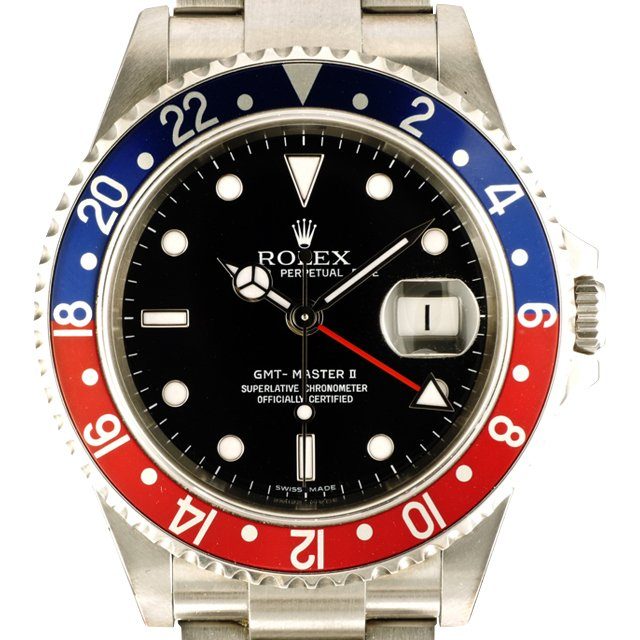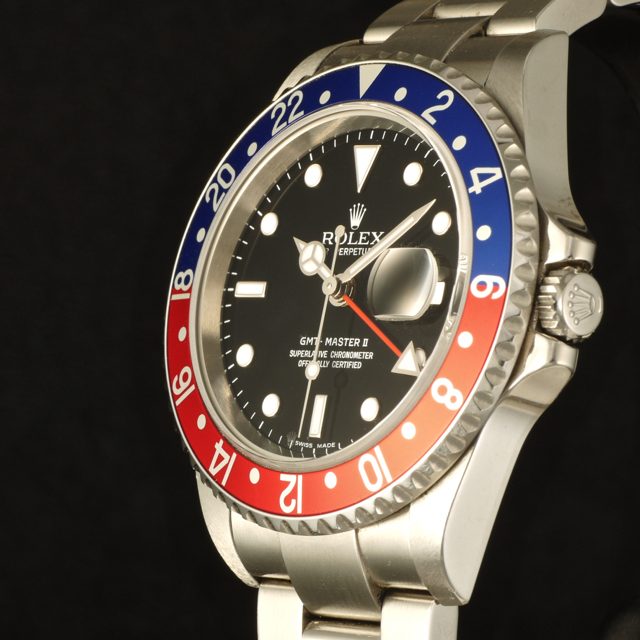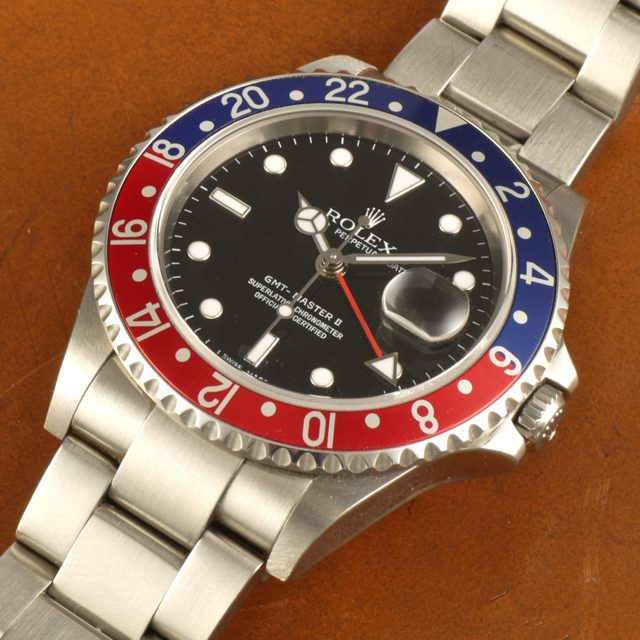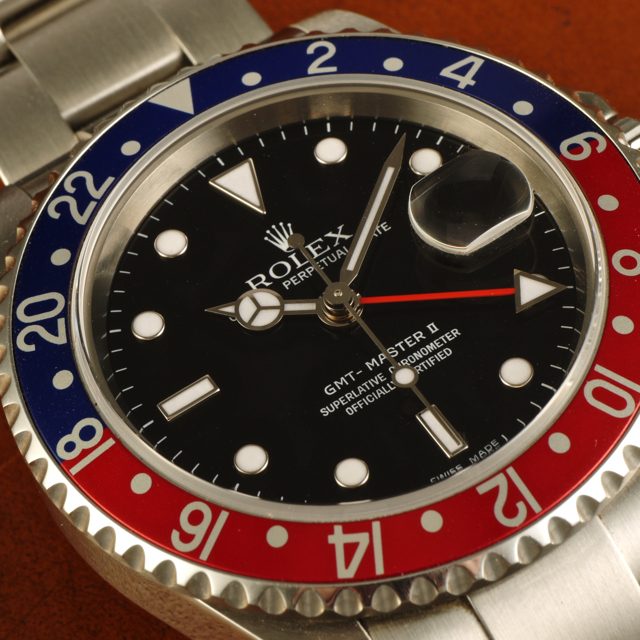



Rolex GMT Master II
Concorde crashes in France2007 Rolex GMT Master II ref. 16710.
The Rolex GMT Master II ref. 16710 was produced from 1989 to 2007 and it’s the last 40mm. GMT with aluminum bezel insert which was replaced by the current model with ceramic bezel and 42mm. case.
The watch in the photo was manufactured in 2007, his last year of production, so it has all the accumulated improvements during the model lifetime.
- 1997-2000 Tritium -> Luminova -> Superluminova
- 2000 Solid end link bracelet introduced (SEL)
- 2003: Sapphire crystal laser crown introduced
- 2003: No holes case
- 2007: New certificate (plastic/credit card size)
- Late 2007: Caliber 3186 instead of 3185 (late Z-series and the M-series)
The Rolex GMT-Master was developed in cooperation with Pan Am as an aviator watch. The introduced fourth hand allowed the display of an additional time with the corresponding number markings on the outer bezel. Pilots used the second time to display the Greenwich Mean Time (GMT), which led to the name Rolex GMT Master.
The GMT-Master has been in production for 26 consecutive years, from 1954 until 1980, replaced by the GMT Master II with independent GMT hand. During that period, there were a few changes to the watch, however no major ones.
In 1959 the GMT-Master was outfitted with crown guards. Something that the previous GMT-Master, the ref. 6452, didn’t have. GMT-Masters without crown guards are incredibly sought after and prices are much higher than of later models with the crown guards. At first the crown guards were so-called pointy crown guards, which later changed to the rounder crown guards.
For collectors, another very significant difference between the GMT-Master from before 1965 when the dials were glossy and gilt, is that the ones from 1966 are matte and with white lettering like this one.
The hour markers are in tritium and age over time, which causes the color to change from white to beige or sometimes even brownish. Collectors appreciate it when the hours markers are nice and equally discolored to beige tones.
Rolex was founded in 1905, the goal was to create wristwatches based on 3 challenges.
The first challenge was archived in 1910 when Rolex sent its movement to the School of Horology in Bienne and awarded the worlds first wrist watch chronometer rating.
Realizing the value of a timing certificate, the company decided they would not accept any movement unless it passed a Rolex seven day battery of tests, so Rolex set the timing standard for the rest of the watch industry.
In 1926 the second challenge was achieved with the birth of the Oyster, so-named as it was as impenetrable as an oyster! Although this invention was initially thought of with skepticism and took some notable events to break this preconception, one year later Mercedes Gleitze swam across the icy waters of the English Channel wearing a Rolex Oyster on her wrist.
All three challenges were completed in 1931 when Rolex launched the first automatic watch. The idea was not new, but it was Rolex that finally perfected and patented the Perpetual self-winding mechanism.
Now the scene was set. Rolex were now producing a watch small enough to be worn on the wrist, impervious to outside elements and which required no winding from the wearer; the Rolex Oyster Perpetual.
Forbes ranked Rolex No.72 on its 2014 list of the world’s most powerful global brands. Rolex is the largest single luxury watch brand, producing about 2,000 watches per day, with estimated 2012 revenues of US$7.7 billion. Rolex SA is owned by the private Hans Wilsdorf Foundation, which is registered as a charity and does not pay corporate income taxes.
